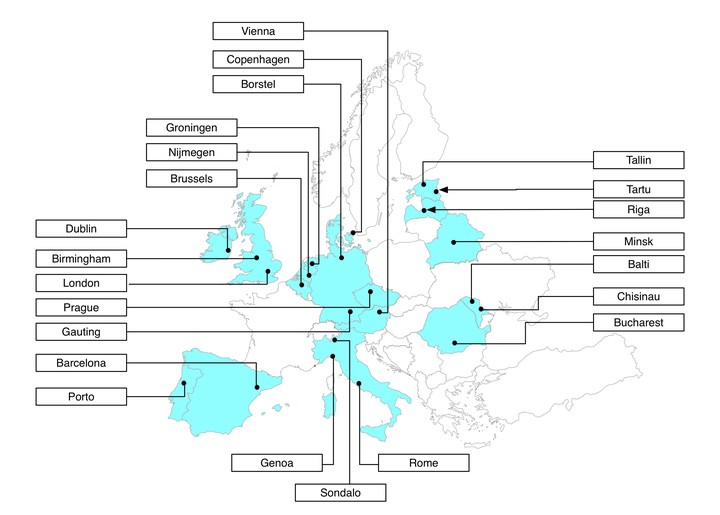Clinical Management of Multidrug-Resistant Tuberculosis in 16 European Countries

Abstract
RATIONALE: Multidrug-resistant tuberculosis (MDR-TB) is a major burden to public health in Europe. Reported treatment success rates are around 50% or less, and cure rates are even lower. OBJECTIVES: To document the management and treatment outcome in patients with MDR-TB in Europe. METHODS: We performed a prospective cohort study, analyzing management and treatment outcomes stratified by incidence of patients with MDR-TB in Europe. Treatment outcomes were compared by World Health Organization and alternative simplified definitions by the Tuberculosis Network European Trialsgroup (TBNET). MEASUREMENTS AND MAIN RESULTS: A total of 380 patients with MDR-TB were recruited and followed up between 2010 and 2014 in 16 European countries. Patients in high-incidence countries compared with low-incidence countries were treated more frequently with standardized regimen (83.2% vs. 9.9%), had delayed treatment initiation (median, 111 vs. 28 d), developed more additional drug resistance (23% vs. 5.8%), and had increased mortality (9.4% vs. 1.9%). Only 20.1% of patients using pyrazinamide had proven susceptibility to the drug. Applying World Health Organization outcome definitions, frequency of cure (38.7% vs. 9.7%) was higher in high-incidence countries. Simplified outcome definitions that include 1 year of follow-up after the end of treatment showed similar frequency of relapse-free cure in low- (58.3%), intermediate- (55.8%), and high-incidence (57.1%) countries, but highest frequency of failure in high-incidence countries (24.1% vs. 14.6%). CONCLUSIONS: Conventional standard MDR-TB treatment regimens resulted in a higher frequency of failure compared with individualized treatments. Overall, cure from MDR-TB is substantially more frequent than previously anticipated, and poorly reflected by World Health Organization outcome definitions.